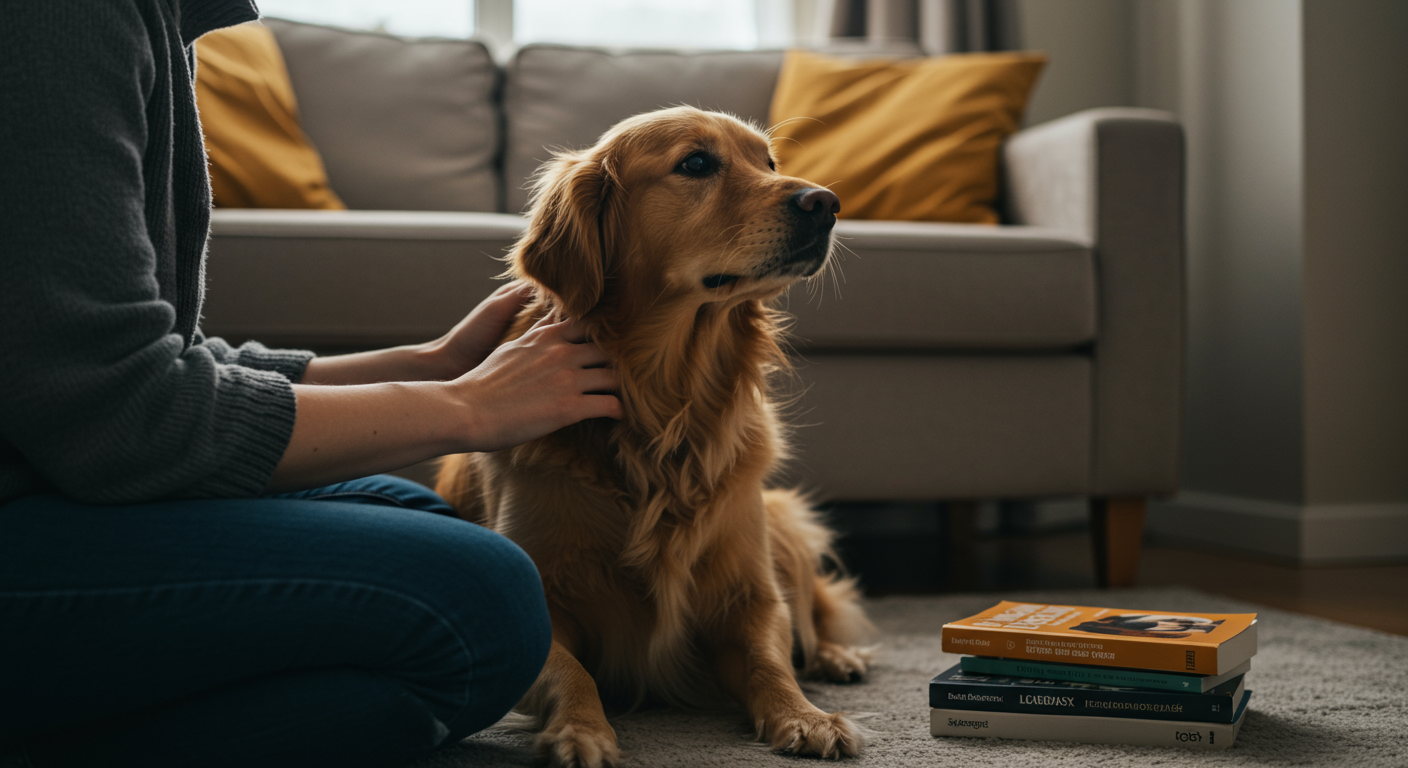As experienced pet parents, you understand the unique bond you share with your dogs and the importance of their well-being. Anxiety in dogs can manifest in various ways, from subtle changes in behavior to more pronounced symptoms that impact their quality of life. This guide provides you with advanced strategies and insights to effectively manage and reduce anxiety in your beloved companion.

Deep Dive into Dog Anxiety for Advanced Pet Parents
Dog anxiety, unlike occasional stress, is a persistent state of worry and fear. Recognizing the root causes and triggers is the first step. These can range from environmental factors like loud noises (thunderstorms, fireworks) and unfamiliar people or places, to underlying medical conditions. Common signs include excessive panting, pacing, trembling, destructive behavior (chewing, digging), changes in appetite, and withdrawal. Understanding your dog's individual triggers is the foundation for targeted intervention.
Advanced Strategies and Insights
For experienced owners, a multi-faceted approach yields the best results. Here are some advanced strategies:
- Environmental Enrichment: Create a safe and secure space, often referred to as a "den," where your dog can retreat when feeling anxious. This could be their crate (if they are crate-trained and find it comforting), a quiet corner with their bed, or a specific room. Adding calming elements like a pheromone diffuser can further enhance this space. Consider playing calming music or white noise to mask triggering sounds.
- Counter-Conditioning and Desensitization: This involves gradually exposing your dog to the anxiety-inducing stimulus at a low intensity while simultaneously pairing it with positive experiences, such as treats or praise. For example, if your dog is afraid of thunderstorms, start by playing recordings of thunder at a very low volume and giving them a high-value treat. Slowly increase the volume over time, always ensuring your dog remains relaxed.
- Behavioral Modification Techniques: Advanced training techniques, such as impulse control exercises and relaxation protocols, can help your dog cope with anxiety. Teach your dog commands like "place" (going to their bed) or "leave it" to redirect them from anxious behaviors. Consistent training reinforces good behavior and builds confidence.
- Nutritional Support: Certain foods and supplements can support your dog's overall well-being and may have a calming effect. Consult with your veterinarian about the potential benefits of a diet rich in omega-3 fatty acids or the use of supplements like L-theanine or chamomile.
Optimizing Your Pet's Behavior
- Consistency is Key: Implement these strategies consistently. Dogs thrive on routine and predictability.
- Monitor and Adapt: Pay close attention to your dog's responses and adjust your approach as needed. Every dog is different, and what works for one may not work for another.
- Professional Guidance: Don't hesitate to consult with a certified professional dog trainer or veterinary behaviorist. They can provide personalized guidance and help you develop a tailored plan for your dog.
Case Study: Achieving Calmness in a Storm-Phobic Dog
Meet Max, a four-year-old Golden Retriever, who experienced severe anxiety during thunderstorms. Through a combination of counter-conditioning (playing thunderstorm sounds at low volumes and rewarding calm behavior), creating a safe space (a crate with a favorite blanket), and the use of an Adaptil Pheromone Diffuser, Max's anxiety significantly decreased. The key was consistent training and environmental management.
Navigating Complex Pet Challenges
Managing dog anxiety can be complex, especially if multiple triggers are present. Here’s how to navigate some common challenges:
- Separation Anxiety: This often requires a structured approach, including gradual departures, desensitization to departure cues, and potentially medication prescribed by a veterinarian.
- Noise Phobias: Combine environmental management (soundproofing, white noise) with counter-conditioning and desensitization.
- Generalized Anxiety: A veterinary behaviorist can help identify and address the underlying causes of generalized anxiety, often involving a combination of behavioral therapy and medication.
Integrating Advanced Care Practices
- Regular Veterinary Check-ups: Rule out any underlying medical conditions that could be contributing to anxiety.
- Collaboration: Work closely with your veterinarian, a certified professional dog trainer, or a veterinary behaviorist.
- Patience and Persistence: Results take time and dedication. Celebrate small victories and remain patient with your dog.
Long-Term Wellness & Longevity Tips
- Maintain a Consistent Routine: Regular exercise, playtime, and feeding schedules provide a sense of security.
- Socialization: Ensure your dog has positive social interactions with other dogs and people.
- Mental Stimulation: Provide plenty of opportunities for mental enrichment, such as puzzle toys and training sessions.
- Early Intervention: Address signs of anxiety early on to prevent them from escalating.
Expert-Level Pet Care Insights
- Understand Canine Body Language: Learn to recognize the subtle signs of anxiety in your dog, such as lip licking, yawning, or whale eye (showing the whites of the eyes).
- Consider a Holistic Approach: Explore complementary therapies like acupuncture or massage, if appropriate and recommended by your veterinarian.
- Prioritize Your Dog's Emotional Well-being: Create a loving and supportive environment where your dog feels safe and secure.